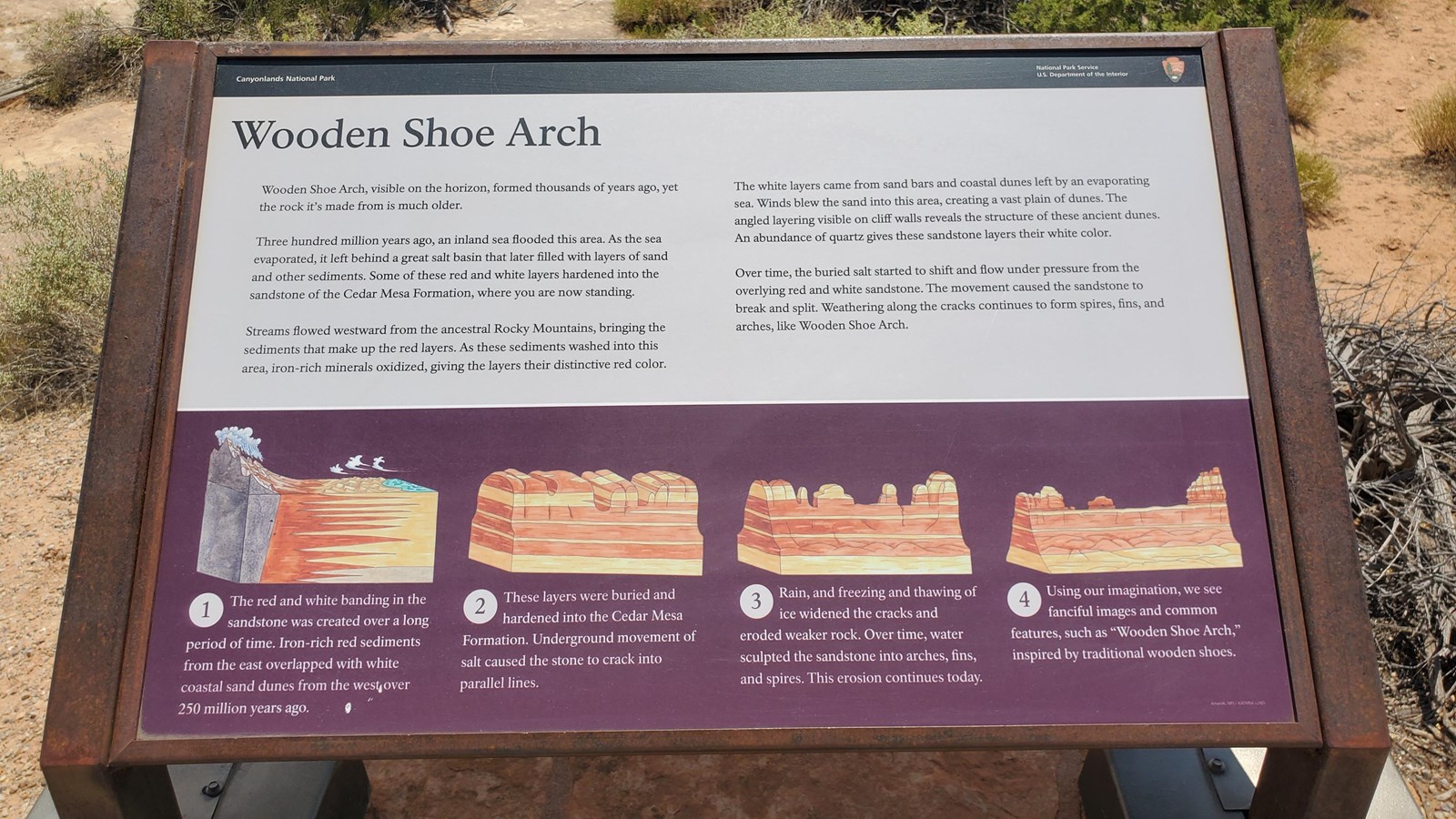Last updated: September 17, 2024
Place
Wooden Shoe Arch Overlook: Wooden Shoe Arch

NPS/Isabel Gonzalez
Historical/Interpretive Information/Exhibits, Scenic View/Photo Spot
Wooden Shoe Arch, visible on the horizon, formed thousands of years ago, yet the rock it's made from is much older.
Three hundred million years ago, an inland sea flooded this area. As the sea evaporated, it left behind a great salt basin that later filled with layers of sand and other sediments. Some of these red and white layers hardened into the sandstone of the Cedar Mesa Formation, where you are now standing.
Streams flowed westward from the ancestral Rocky Mountains, bringing the sediments that make up the red layers. As these sediments washed into this area, iron rich minerals oxidized, giving the layers their distinctive red color.
The white layers came from sand bars and coastal dunes left by an evaporating sea. Winds blew the sand into this area, creating a vast plain of dunes. The angled layering visible on cliff walls reveals the structure of these ancient dunes. An abundance of quartz gives these sandstone layers their white color.
Over time, the buried salt started to shift and flow under pressure from the overlying red and white sandstone. The movement caused the sandstone to break and split. Weathering along the cracks continues to form spires, fines, and arches, like Wooden Shoe Arch.
Below this text are four diagrams of the formation of Wooden Shoe Arch. From left to right they are labled one, two, three, and four. Each diagram is accompanied by text describing the displayed process.
- The red and white banding in the sandstone was created over a long period of time. Iron-rich red sediments from the east overlapped with white coastal sand dunes from the west over 250 million years ago.
- These layers were buried and hardened into the Cedar Mesa Formation. Underground movement of salt caused the stone to crack into parallel lines.
- Rain, freezing and thawing of ice widened the cracks and eroded weaker rock. Over time, water sculpted the sandstone into arches, fins, and spires. This erosion continues today.
- Using our imagination, we see fanciful things and common features, such as "Wooden Shoe Arch," inspired by traditional wooden shoes.
